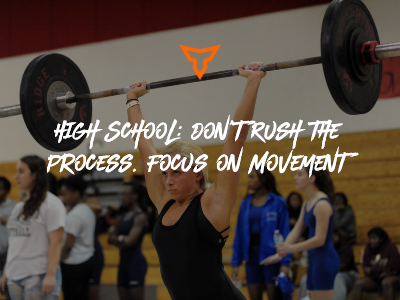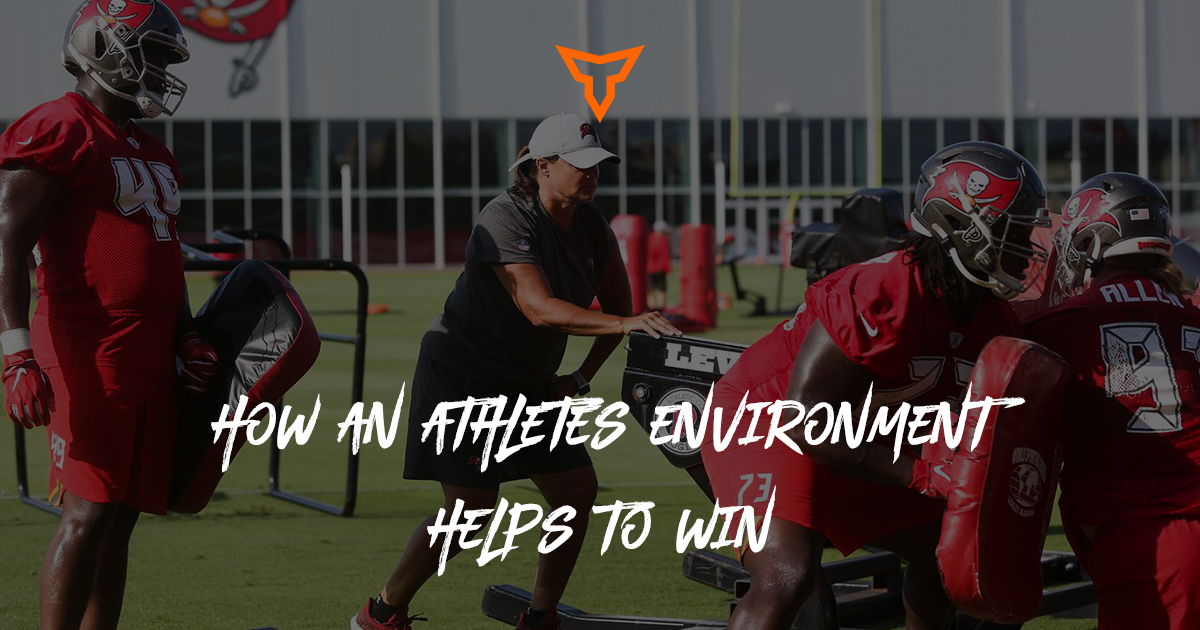Compound Training for the Year-Round Athlete: A Strength Coach’s Guide
Guest Author Coach Erin Bratcher, RSCC, is the Director of Strength and Conditioning for Cardinal Gibbons High School (7A NC) and the Head Strength Coach for Meredith College (NCAA DIII). Bratcher also owns EB Athletics, a private gym that trains hundreds of athletes and adults around the Triangle area; the News & Observer named EBA “Raleigh’s Best Gym” in 2024.
Early specialization, or the concept that athletes are choosing to play one sport only at a young age, is something most of us who work with youth athletes have heard about repeatedly in recent years. This trend has grown and will likely continue to grow as athletes feel an increased pressure to perform at a higher level at relatively young ages. Numerous studies discuss in depth how this specialization impacts athlete development, injury risk, and performance enhancement, many citing concerns of early specialization. (Thomas H. Caruso, CSCS, RSCC, Early Sport Specialization Versus Diversification in Youth Athletes)
Rather than breaking down the good and bad aspects of this trend, I want to discuss how this affects what we as strength coaches see and how we can adapt to fill our roles as best we can. When looking at athletic development, the one big takeaway that comes into play with these athletes is that they aren’t just playing or practicing that one sport; they are competing in that sport most of the calendar year. When an athlete is consistently competing, there are obvious potential issues: limited rest and recovery physically, limited rest and recovery mentally, increased potential for overuse injuries or burnout, limited time to dedicate to building or hypertrophy training cycles without impacting game-play ability. The year-round competitive seasons with short or non-existent off seasons are where we start to see significant shifts in the weight room and how we program strength training for developing athletes.
Most of us strength coaches were taught some variation of seasonal phasing guidelines. Typically, something like this:
Post-season: We rebuild, focus on strength endurance, rebuild work capacity, and establish joint stability and unilateral strength.
Off-season: We build strength, focus on hypertrophy, and put on size.
Pre-season: We build power and aim to “peak” our athletes for the in-season, making power output and force production the focus.
In season, it's all about maintaining, injury prevention, and ensuring our athletes stay high-performing throughout the season.
Of course, the opinions on the details of these phases vary, but most coaches will agree that taking their athletes through phases requires some pause for consistency. For a basketball player, seasonal phasing might look something like this:

However, when you throw in AAU seasons, college combines or prep camps, and high school summer ball, a basketball player's calendar year, for example, may look more like this:

If the highlighted time frames are our training periods where we don’t have to worry about the impact on game performance, these two timelines vary greatly.
This concept is universal. Volleyball is year-round, lacrosse is year-round, swimming never stops, runners don’t let up, and just about every sport has its version of a travel ball off-season, which is increasingly packed with competitive schedules.
So again, our athletes spend the majority of the calendar year “in season” or competing. When you’re talking about high school athletes, you are talking about some of the most critical years of physical development, an opportunity in time that you don’t want to go down the drain for the sake of one ongoing competitive cycle that forces us to stay within our “in-season training” guidelines. While we may not get our macro cycle off-season training block to capitalize on gaining muscle mass, building work capacity, and developing motor skills, we can find ways to capitalize on “microdosing,” as Coach Mock calls it, during this ongoing competitive phase we see happening. Microdosing is handy when in-season sessions are limited and time is tight; making the most of them may mean compressing cycles down to hit the major focus of each phase to fill the gaps overall. (Mock, Stephanie: The Power of Microdosing)
But what if there’s no down week during a busy season that rolls right into another busy season? That’s where “compound,” or what we usually call “complex training,” is a useful way to check various boxes in minimal time.
Take our Cardinal Gibbons nationally ranked cross country team, for example. Two 30-minute lifts a week, in season, practically all year round. In a typical session, we see 3 main boxes to check: strength, stability, and injury prevention, with 60 kids of varying training ages.
Compounds we might program include glute bridge floor press, bird dog rows, and side plank leg raises (see images below), all 3 of these include some variation of isometric for the glute max or glute med and some amount of core activation on top of a strength-based movement at the same time. Each of these can also be regressed or progressed based on the athlete's ability level. Rather than doing all of these exercises as separate individual exercises, we decrease the time spent in exertion for that day (they’ve also practiced), and we add a component of coordination and cognitive function. Compound lifts can be a simple way to put injury prevention into the programming without taking away time or increasing critical energy expenditure. Some others we often use for cross country and other sports include:
- Floating heel split squats build lower leg stability while working on unilateral strength
- Hip circle inverted rows, work on ever weak glute med while training upper body major movers
- 1/2k overhead press with ½ iso row
- Side plank leg lift
- Glute bridge floor press
- Bird dog row
Generally speaking, the concentric phase is your friend when you're in season. Finding ways to spend time in the concentric or isometric phase while limiting time in the eccentric phase is going to help athletes gain/maintain strength and activate supporting muscles without causing excess soreness or muscle fatigue. Utilize isometrics for hypertrophy benefits and to improve tendon structure & function, improve dynamic performance & neuromuscular function. (2) (Oranchuk DJ, Storey AG, Nelson AR, Cronin JB, Isometric training and long-term adaptations: Effects of muscle length, intensity, and intent: A systematic review)
Compound training isn’t the be-all and end-all for all situations, but it is one way to get more out of limited in-season training for in-season seasons that don’t stop.
Subscribe to our blog
Subscribe to receive the latest blog posts to your inbox every week.
Related posts

In-Season Training Considerations for Softball

Training the High School Level: Don’t Rush the Process and Focus on Movement

